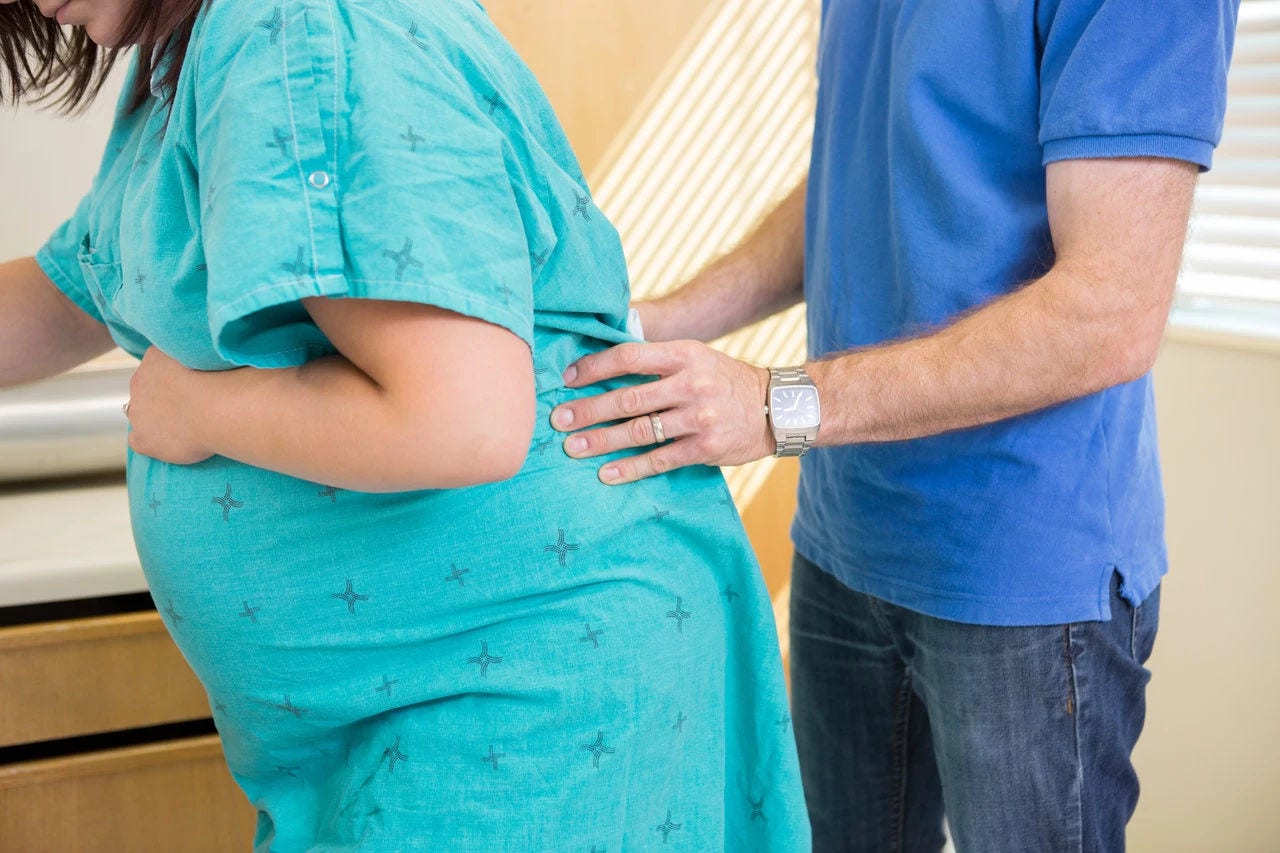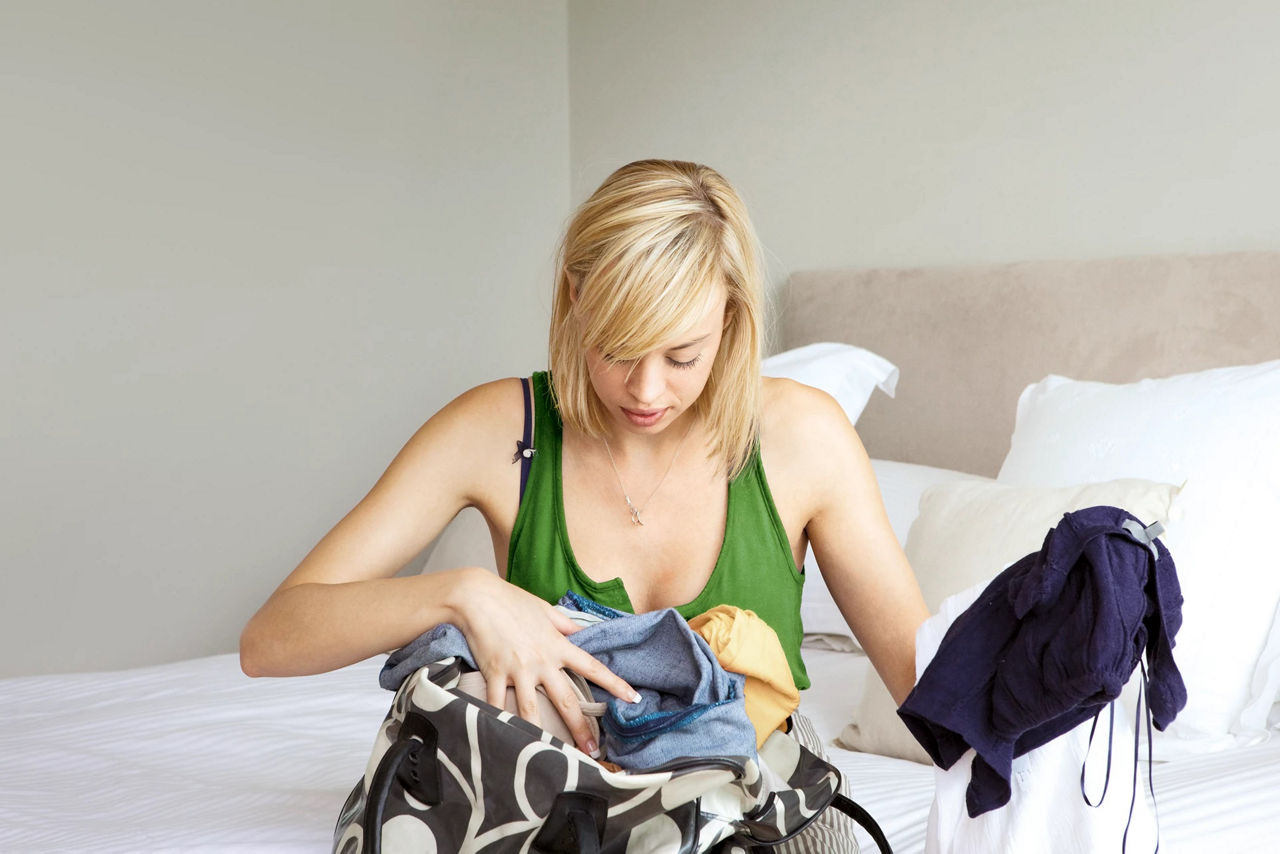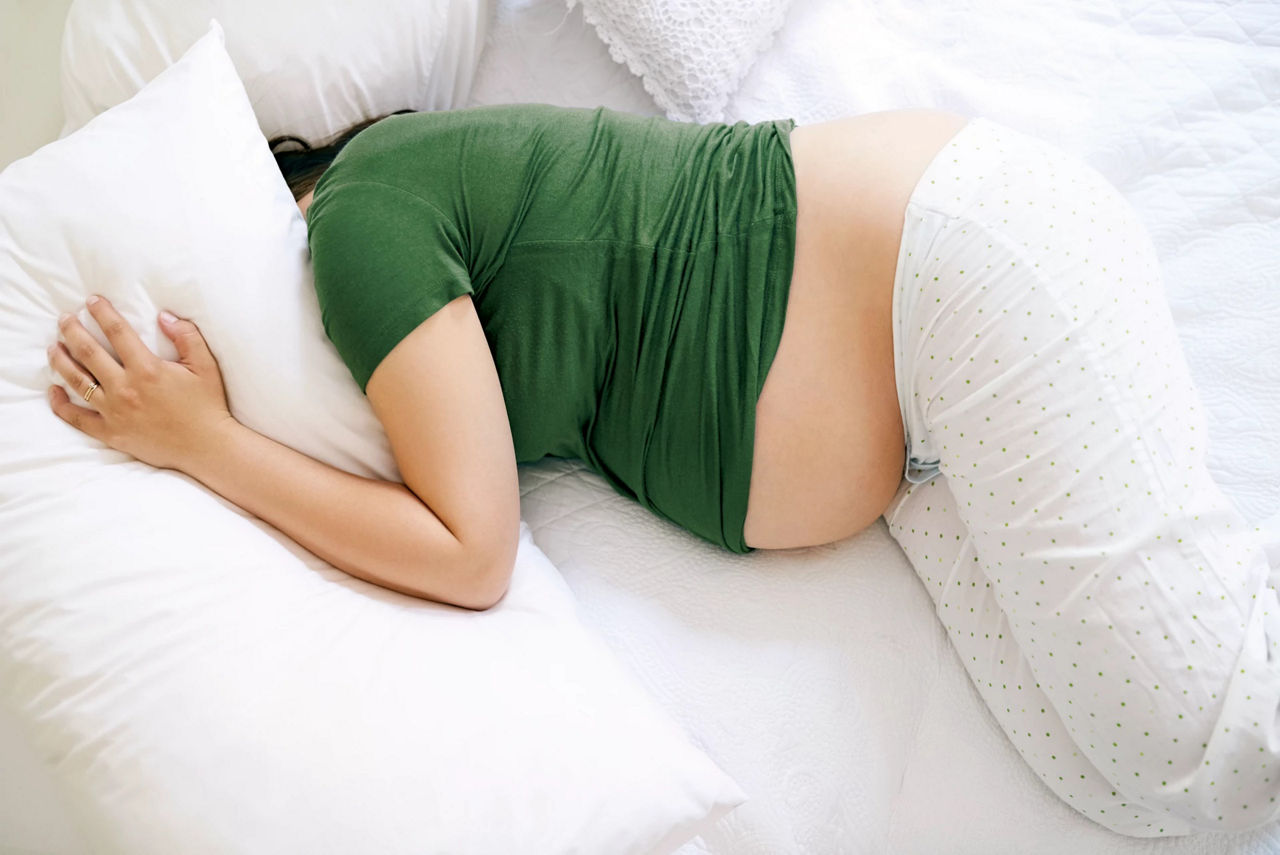Free weaning plan - Register here
From that first contraction to holding your little one for the first time, learn everything you need to know about the stages of labour.
Even if you’ve been there, done that, and bought the T-shirt before, every experience of labour is different. From how your contractions will feel to when your water will break, here you’ll the information you need from our baby experts and parents about the 3 stages of labour.
The stages of labour explained
The first stage of labour (also called established labour or the latent phase) is when your cervix softens, thins, and starts dilating, and your contractions get stronger and more regular1.
The second stage of labour is the pushing stage, when you’re fully dilated and ready to give birth to your baby1.
The third stage of labour is when your baby has arrived and you deliver your placenta1.
The first stage of labour: your baby is on the move!
Very early labour: the latent phase
Before the first stage of established labour officially starts, you’ll probably have a ‘latent phase’. This is very early labour when your cervix thins and dilates, and you might begin to feel irregular contractions1. Whilst things are moving along, it might be some time yet before your labour is fully established1.
In your latent phase, you might get2:
- Cramping (like period pains)
- Diarrhoea
- Nausea
Because there’s no way to know how long the latent stage of labour can last, your midwife will probably advise you to stay home for the time being, where you’ll feel most comfortable. Staying active with some gentle walking or rocking on a birthing ball can help your baby move down into position towards the birth canal and help your cervix dilate1.
💡Top tip: Keep your energy up
You might not feel like eating, but the latent stages of labour are a good time to try to have some healthy, energy-boosting snacks like toast or cereal, and plenty of water to stay hydrated so that your body is prepared to deliver your baby1.
Want to know more about snacks and drinks for labour?
Possible signs of labour: what to look out for
Once labour starts, you might notice signs like3:
- More regular contractions or tightening in the muscles of your womb that may be painless initially or can feel like strong period cramps.
- Backache or a heavy feeling in your lower back
- An urge to go to the loo, caused by your baby’s head pressing on your bowel
- Your waters breaking
- A ‘show’ or plug of mucus that comes away from the opening of your cervix
- Feeling or being sick4.
- Diarrhoea4.
At this point, it could be time to grab your hospital birthing bag and make your way to the hospital (always call ahead to make sure that this is the right thing to do). Sylvie’s mum offers her advice: “After speaking with my midwife, I stayed at home as long as I felt comfortable. Then things went up a notch, and I knew it was time to head off to hospital. Trust your body and your instincts and you won’t go far wrong.”
Read more about when to go hospital as you progress through labour.
Wondering what to pack in your hospital bag? Download our handy free checklist to get your started.
Getting your ‘show’
During your pregnancy, there’s been a plug of mucus covering the opening of your cervix to protect you and your baby from infections3. In the latent phase and early stages of labour, that plug can come away and pass through your vagina in a thick, jelly-like blob called a ‘show’.
Once you’ve passed your show, your labour might come on quickly or take a few days – there’s simply no way to know. Some people won’t notice their show at all during labour, so don’t worry if you don’t get one5.
‘Breaking’ news! When your waters break
In TV shows and films, someone’s waters breaking is usually shown as a big, dramatic gush. While this can be the case in real life, it can also feel more like a slow trickle3. If you like, you can wear a sanitary towel or a period pad (but not a tampon) to prepare for your waters breaking.
Did you know?
Sometimes, as labour starts (or just before), the membrane of your baby’s amniotic sac breaks, and the amniotic fluid drains out through your vagina. That’s what’s known as your waters breaking3.
Don’t be alarmed if anyone mentions the ‘rupture of membranes’; that’s just another term for when your waters break4!
Once your waters have broken, there’s a slightly higher risk of infection, so it’s best to avoid using tampons or having sex3. If your waters break more than 24 hours before your labour starts, you might be offered an induction to reduce the chance of infection even further3.
It’s normal for your plug and waters to have little bits of pink blood in them.
But you should call your midwife straight away if3:
- You’re losing blood
- Your waters are coloured or smell strongly
Contractions
As you get towards the end of your pregnancy, you’ll probably start to notice and question every tiny twinge and movement - especially if you’re having your first baby. It’s an exciting time and natural to be looking for signs that your little one is on their way.
So, what is a contraction, and what do they feel like? When you have a contraction, your womb tightens and then relaxes to push your baby down towards the birth canal3. For some people, this can feel like intense period pains3. You might have had ‘practise contractions’ or Braxton Hicks contractions towards the end of your pregnancy, which might have been uncomfortable, but tend to be less painful than the real deal3. “My contractions were very similar with both of my babies”, says Seb’s mum. “They felt similar to period pains, but deeper, and more intense. The breathing exercises I’d practices in antenatal class really helped to ease them along.”
The contractions you’ll get in labour might start out being short and irregular but will get stronger and more frequent as you move through the different stages of labour and dilate centimetre by centimetre. Try to rest in between each one if you can, and let your midwife know once your contractions start coming every 5 minutes or less3.
💡Top tip: How to time your contractions
Timing your contractions is a great way to see how your labour’s progressing, and it’s one of the first things your midwife will ask about when you call the hospital.
Ideally, you should be able to tell them how long each contraction lasts and how often they come. This will help them to assess whether it’s time for you to head into hospital or whether they need to come to you if you’re having a home birth3.
Of course, it can be difficult to focus on counting when you’re in the middle of active labour. It can help to use a stopwatch or, even better, ask your birthing partner to time the length of each contraction and the gap between each one. “You might think that your mind will be elsewhere during labour, but you’ll be surprised at how focussed you might be when it begins! I used the stopwatch on my phone to keep track, and being able to see my progress was really motivating.” (Isla’s mum).
Making the first stage more comfortable
The latent phase and first stage of labour can last a while, especially if this is your first time going into labour1. It’s normal to feel uncomfortable or frustrated if things aren’t moving along as quickly as you’d like. Remember to keep your energy levels up with regular snacks and drinks, and read our top tips for what you can do to help you get through labour.
Pain relief during labour
When it comes to pain relief in labour, there are a number of options to consider, including6:
- Gas and air: a mixture of oxygen and nitrous oxide gas that you can control yourself. It won’t remove any pain or discomfort completely, but it can make it more manageable.
- Pethidine: An injection into your lower body to provide pain relief.
- Epidural: A type of local anaesthetic that numbs the nerves that register the pain from the birth canal.
Your midwife will probably talk through your pain relief options with you in the later stages of your pregnancy so you can note down what you’d like to happen in your birth plan.
What is slow labour?
Your baby is unlikely to stick to a timetable – they’ll come along in their own good time. Sometimes, your labour progress can be slower than expected, especially if your baby’s in a bit of an awkward position or your contractions aren’t very strong or regular1.
Slow labour signs
Your midwife will check on you regularly to see how your labour is progressing. If your cervix hasn’t dilated more than 2cm in 4 hours during the first stage of labour, and your contractions become less frequent, this can sometimes be considered to be a slow or ‘delayed’ labour7.
If you’re having a slow labour, your midwife might offer to1:
- Break your waters (if they haven’t broken already) to strengthen your contractions.
- Put you on an oxytocin drip to make your contractions stronger and more regular.
Your healthcare team will discuss all your options with you and help you make the right decision for you and your baby.
‘Will I have to have a C-section?’
If your labour progress is really slow or your midwife thinks a vaginal delivery isn’t the safest option for you and your baby, they might offer you a caesarean section (or C-section).
If there’s time, your doctor or midwife will talk to you about the decision, so you have all the facts before having a caesarean section8.
The second stage of labour: get ready to meet your baby
Once your cervix is 10cm dilated, the second stage of labour starts and it’s finally time to deliver your baby1. This stage can take up to 3 hours for your first baby or up to 2 hours if you’ve given birth before1. It can be hard work, but your midwife will be there to support you every step of the way.
Birthing your baby
You should start to get the urge to push as your baby moves down the birth canal towards the entrance to your vagina – it might feel a bit like you need to poo1. Your midwife will be there every step of the way to help you know when to push. If there’s a risk of tearing, they might ask you to pant and push more gently to ‘breathe your baby out’9.
Once your baby’s head has been born, their shoulders and the rest of their body will be delivered fairly quickly. If you’d like, you should then be able to have some lovely skin-on-skin contact time with your baby as you welcome them into the world: “It was an incredible feeling” says Seb’s mum, “when I held my son for the first time, I laid him on my chest and just took it all in. I’d done it, and it felt so good.”

Almost done: the third stage of labour
It might seem odd, but you still have one more stage of labour left once your baby has arrived into the world. This involves delivering the placenta1, and your midwife will still be by your side to guide you through.
Delivering the placenta
Your midwife might offer you an oxytocin injection as soon as you give birth, which will help your womb contract and deliver your placenta more quickly (usually within 30 minutes of your baby being born)1.
Or, if you’d prefer to deliver the placenta naturally, you can wait until you feel the urge to push again without any added oxytocin. This usually happens within an hour of your baby’s arrival1. Once it’s delivered, your placenta will be checked thoroughly to make sure that it is complete.
Cord clamping
In general, it’s best to wait 2-5 minutes after your baby’s born before clamping and cutting their umbilical cord10. That’s because it gives more time for the blood to keep flowing between the placenta and your baby, which can help keep their blood pressure stable10.
In some cases, your midwife might need to cut the umbilical cord sooner, for example if it became wrapped around your baby’s neck during birth or if you’ve delivered twins who share the same placenta10. Your baby will still get all the care they need for the best possible start to life.
Breastfeeding straight after birth
Having skin-to-skin contact straight after your baby’s born is a really special way for the two of you to bond. It also gives the perfect opportunity for their first breastfeed11. Your baby’s instincts to breastfeed are particularly strong as soon as they’re born, so this is a great way to start your breastfeeding journey if that’s how you’ve chosen to feed your little one11.
You did it! Rest and recovery after birth
Whether you’ve had a vaginal delivery or C-section, you’ll need to give yourself plenty of time to rest and recover after giving birth. After all, your body’s just done something amazing!
Depending on how you and your baby are doing, you might be able to go home between 6 and 24 hours after your little one has arrived12. You’ll have visits from your midwife or health visitor to make sure you and your baby are settling in well to life together and to answer any questions you might have.
If you’re looking for more information and advice on looking after your body and mind after giving birth, we’ve got you covered.
Stages of labour FAQs
How long does labour last?
Everyone’s labour is different, meaning there’s no set length of time that labour lasts.
As a general guide, if this is your first pregnancy, it can take 8 to 18 hours from when your labour starts to being fully dilated and another 3 hours to deliver your baby1. If you’ve given birth before, the process can move more quickly, taking 5 to 12 hours to become fully dilated and another 2 hours to deliver your baby1.
How far apart should my contractions be in each stage of labour?
There’s no set pattern for how long or regular your contractions will be—they vary from person to person. But as a rough guide, they will be 40-50 seconds every 10 minutes or so at the very beginning of labour and increase to over 60 seconds long with less than a minute between them by the end13.
Remember, everyone is different, and what’s normal for you might not be the same as what’s normal for someone else.
How many centimetres dilated should I be in early labour?
The first stage of established labour starts when you’re dilated 4cm and having regular contractions. When fully dilated (10cm), you’re ready to move into the third stage of labour and start pushing1.
When should I go to the hospital during labour?
In most cases, you won’t need to go to the hospital until you’re having strong, regular contractions and/or your waters have broken3. But in some cases, your midwife might want you to go in earlier. When you think your labour has started, call your maternity unit and follow their instructions. Read our full article on when to go to the hospital in labour.
Last reviewed: February 2025
Reviewed by Nutricia’s Medical and Scientific Affairs Team
- NHS (2023). The stages of labour and birth [online] Available at https://www.nhs.uk/pregnancy/labour-and-birth/what-happens/the-stages-of-labour-and-birth/ [Accessed July 2024]
- NHS East Sussex Healthcare. As labour approaches [online] Available at https://www.esht.nhs.uk/service/maternity/labour-and-birth/as-labour-approaches/ [Accessed July 2024]
- NHS (2023). Signs that labour has begun [online] Available at https://www.nhs.uk/pregnancy/labour-and-birth/signs-of-labour/signs-that-labour-has-begun/ [Accessed July 2024]
- NHS East Sussex Healthcare. As labour approaches [online] Available at https://www.esht.nhs.uk/service/maternity/labour-and-birth/as-labour-approaches/ [Accessed July 2024]
- NHS Start for Life. Signs of going into labour [online] Available at https://www.nhs.uk/start-for-life/pregnancy/preparing-for-labour-and-birth/signs-of-going-into-labour/ [Accessed July 2024]
- NHS (2023). Pain relief in labour [online] Available at https://www.nhs.uk/pregnancy/labour-and-birth/what-happens/pain-relief-in-labour/ [Accessed July 2024]
- NICE (2023) Intrapartum care [online] Available at https://www.nice.org.uk/guidance/ng235/chapter/Recommendations#care-throughout-labour-in-all-birth-settings [Accessed July 2024]
- NHS (2023). Caesarean section [online] Available at https://www.nhs.uk/conditions/caesarean-section/ [Accesed January 2025]
- NHS Inform (2023) Giving birth to your baby [online] Available at https://www.nhsinform.scot/ready-steady-baby/labour-and-birth/giving-birth/giving-birth-to-your-baby/ [Accessed July 2024]
- NHS University Hospital Southampton (2018). Deferred cord clamping [online] Available at https://www.uhs.nhs.uk/Media/UHS-website-2019/Patientinformation/Pregnancyandbirth/Deferred-cord-clamping.pdf [Accessed July 2024]
- NCT. Skin-to-skin contact and breastfeeding right after birth [online] Available at https://www.nct.org.uk/baby-toddler/feeding/early-days/skin-skin-contact-and-breastfeeding-right-after-birth [Accessed July 2024]
- NHS Inform (2023). Going home with your baby [online] Available at https://www.nhsinform.scot/ready-steady-baby/early-parenthood/going-home/going-home-with-your-baby/ [Accessed January 2025]
- NHS Inform (2023). Contractions [online] Available at https://www.nhsinform.scot/ready-steady-baby/labour-and-birth/labour/contractions/ [Accessed July 2024]

Join our baby club
Ready to stop worrying about what other people think and do what feels right to you? We’ll give you the support you need to follow your instincts and enjoy parenthood to the max:
Helpful emails
Non-judgemental support
Free weaning plan
Tips from real parents
More from pregnancy
Pregnancy topics
Need free advice with a smile? Get in touch with our dedicated Care team.
Ask us a question (8am - 8pm Monday to Friday, 10am - 4pm Weekends)
Messenger
Contact us on Facebook (10am - 10pm, 7 days a week)
Call us
Call us on 0800 977 8880 (8am - 8pm Monday to Friday)
FAQs
Get answers to your most frequently asked questions


